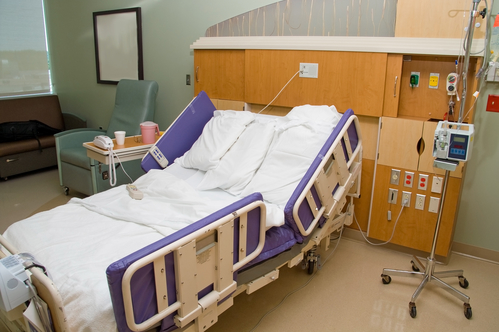
You may have heard of the benefits of bariatric beds and how they can help patients with weight challenges, but what does bariatric mean, really? The term “bariatrics” came from two Greek words: “baros” meaning weight and “iatrics” meaning treatment. It was first used around 1965 to refer to a branch of medicine that studies and practices ways to prevent and treat obesity. It also looks at the underlying causes of weight gain. Health and fitness fields such as exercise, dieting, and behavioral therapy are also part of bariatrics.
Contemporary usage of the term has evolved to refer to hospital equipment used for people of larger sizes, such as bariatric hospital beds and chairs. Why does one need specialized furniture? What exactly is the difference between a “regular” bed and a bariatric bed?
The Benefits of a Bariatric Bed
While a regular bed may be used by an overweight patient, the advantages of having a bariatric bed just seem too good to pass up. A bariatric bed can address a variety of treatment and safety issues for patients who weigh up to 1000 lbs.
For example, a bariatric bed not only has a greater weight capacity than a standard bed frame, widths are available in 36”, 42”, 48” 54” and 60” versions, and some models known as “convertible” are adjustable width. Similar to a hospital bed, the overall height of the bed can be adjusted, and they feature casters that allow the bed to be wheeled to different parts of the home or care facility.
What makes a bariatric bed even more beneficial is not only does it meet the requirements of bariatric patients, it addresses the needs of caregivers to provide optimal assistance to their patients. A bariatric bed prevents possible injury for both patient and caregiver, as it enhances the ability to move and handle the patient. Some of these tasks include transferring the patient in and out of a bed or chair, moving or turning the patient to prevent bed sores, providing support to the patient’s limbs while repositioning the patient and assisting the patient in everyday movements, such as bathing or using the bathroom.
When positioning the bariatric bed in a room, don’t forget to ensure that there is a sufficient amount of space around the bed to accomplish any clinical or nursing tasks that may arise. As a rule, a clearance of five feet on each side, as well as at the foot of the bariatric bed, would provide enough room for any task that needs to be completed.
Bariatric Mattress: A Necessity for Comfort
Aside from the stability and mobility of a bariatric frame, bariatric beds also accommodate bariatric mattresses that are tailor-fit to the needs of bariatric patients. A bariatric mattress is different from a regular mattress in that it is specifically designed and constructed to accommodate heavier weight users. Inner-spring bariatric mattresses are built with heavy-duty gauge springs that provide a suitable surface to comfortably serve heavier users, yet are significantly more durable than normal sleep surfaces.
Bariatric Mattresses are also made of extremely durable and strong material. They are neither too thick nor overstuffed with foam. In a bariatric mattress, you can expect less foam to avoid compacting and thinning of the material. It is usually constructed with high-density foam that can withstand excessive pressure day in and out.
Specialized bariatric alternating pressure mattress adjusts the pressure on the patient’s body using a cushion of air, which helps with relieving pressure from the body. This is especially helpful in avoiding bed sores and allowing air to circulate (a function of low air loss mattresses) even when a patient is lying down for an extended period.
Bariatric Mattresses are customized to provide the patient with ultimate comfort and treatment benefits. These mattresses come in widths of 36 inches to 60 inches, ensuring ample room for the patient, and can accommodate weight capacities ranging from 450 lbs to 1000 lbs. Bariatric Mattresses are available in a range of type options, from Deluxe High-Density Foam to Alternating Pressure with Low Air Loss functionality.
Truly, the needs of heavier patients are a priority and bariatric beds and mattresses aim to provide the comfort and quality of life they deserve. Bariatric equipment ensures that overweight patients and their caregivers are able to fulfill basic daily tasks with relative ease and safety. This is what makes bariatric beds better than their regular counterparts.
About The Author:
Zane Lewis is a former caregiver himself, having served as the primary in-home caregiver for his mother during her remaining twilight years. He is the owner of NewLeaf Home Medical, a national online medical product, and supplies retailer devoted to helping customers best meet the care needs for their loved ones.




